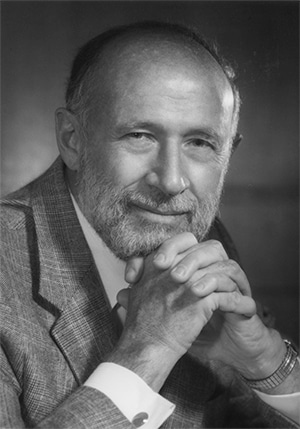Herbert Derman, MD
1921–2019
February 2020—Herbert Derman, MD, CAP president from 1983 to 1985, died Dec. 18, 2019, seeking a remedy to his chronic heart failure.
Dr. Derman was CAP vice president from 1981 to 1983 and a member of the Board of Governors from 1971 to 1980. He was the chair and a member of several CAP councils, committees, and commissions.
Dr. Derman was named CAP Pathologist of the Year in 1986. He received the ASCP/CAP Pathology Continuing Medical Education award in 1974 and 1978 and the ASCP/CAP Joint Distinguished Service award in 1993.

Dr. Derman
Dr. Derman retired as director of pathology at Riverside Methodist Hospital, Columbus, Ohio, in 1990. He held longtime faculty positions at Ohio State University College of Medicine and Albany (NY) Medical Center. He was a past president of the New York State Society of Pathologists and the New York State Association of Public Health Laboratories.
“Herb was a big picture kind of guy,” says George D. Lundberg, MD, editor in chief of Cancer Commons and editor at large at Medscape. “I would call him a visionary.”
Dr. Lundberg recalls Dr. Derman as “driven, intense, and goal-oriented” when the two served together on CAP committees in the 1970s. “He felt very strongly about issues and would take strong opinions on them,” he says. Dr. Lundberg often found himself on opposite sides of a discussion with Dr. Derman, owing to the fact, he says, that Dr. Lundberg came up the ranks as an academic and Dr. Derman advanced on the private practice pathway. “Our points of view seemed to coalesce in the early 1980s,” he says, when Dr. Derman invited Dr. Lundberg to serve as keynote speaker at a CAP strategic planning retreat in Michigan. “That was an interesting weekend with the leaders of American pathology, trying to figure out the future, which is always hard to do.”
One of Dr. Derman’s most significant contributions to the CAP was establishing a lobbying effort to represent the pathologist’s viewpoint. “Herb, with his vision, recognized that government, which had not had a lot to do with pathology for a long time, was going to have a lot to do with the field in terms of how it went forward with laboratory accreditation,” Dr. Lundberg says. “He saw that it would be necessary for pathologists to have an active voice in Washington.”
Dr. Derman established the CAP Joint Pathology Task Force to attempt to unite established organizations such as the CAP with smaller organizations that had appeared on the scene in the wake of the Tax Equity and Fiscal Responsibility Act of 1982. In a December 2014 CAP TODAY column, then CAP president Gene N. Herbek, MD, highlighted Dr. Derman’s contributions in this area. “Dr. Derman came into office just as TEFRA was being implemented,” Dr. Herbek wrote. “It was our good fortune he took the helm when he did, because Dr. Derman’s political skills were pivotal during a challenging time. He recognized the external pressures we would soon confront and pressed for changes that made our leaders and advocates more nimble. Dr. Derman, who drove formation of a lobbying operation that has protected the interests of pathologists and patients for years, remains a role model.”
Nancy A. Young, MD, a member of the CAP Board of Governors, struck up a friendship with Dr. Derman after he saw her name on the 2018 CAP election ballot. Dr. Derman recognized Dr. Young as the daughter of a boyhood friend, who was also a pathologist, and reached out to her by email, says Dr. Young, chairman of pathology and laboratory medicine, Einstein Healthcare Network, Philadelphia.
“He was so sharp, it was like speaking to a contemporary,” Dr. Young says. “He had an amazing memory and sense of humor.” She says Dr. Derman was a great source of information on the history and politics of the CAP and the principles of laboratory medicine. He recognized as early as the 1960s that the CAP needed to take the lead with proficiency testing and laboratory accreditation, inspecting, and testing standards, she says.
“I will always cherish his gift to me that I keep on my desk: an antique colorimetric scale used for measuring hemoglobin by comparing the color of dried blood on absorbent paper.”
Dr. Young says Dr. Derman died secondary to sudden development of hypotension that occurred during insertion of a third pacemaker wire through a previously clotted vessel. His family insisted on an autopsy “so that all can learn from his death,” says his daughter, Letty D. Thall, of Philadelphia.
Dr. Derman maintained a vibrant social life and enjoyed dinner out with friends a day or two before his procedure, Dr. Young says. “He did it on his own terms,” she says. “He left just as brilliant as he came in.”
Dr. Derman is survived by three daughters, one stepdaughter, eight grandchildren, and five great-grandchildren.
—Amy Carpenter Aquino